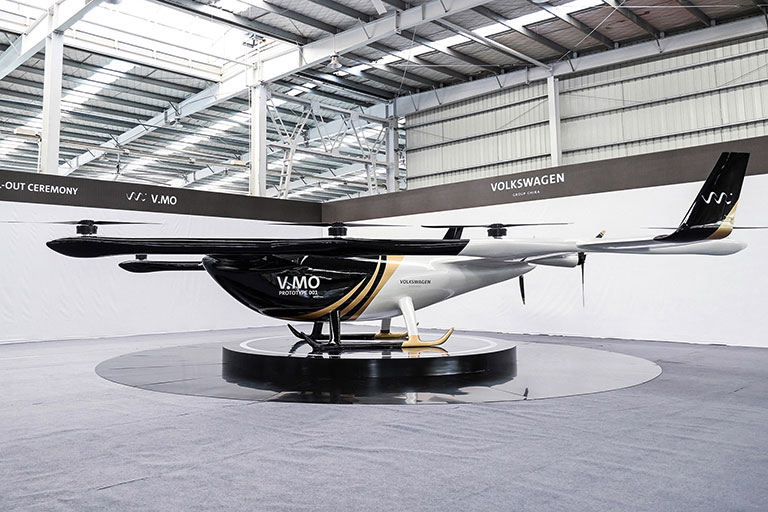Could this new, state-of-the-art, autonomous, electric-powered flying car developed by Volkswagen China revolutionise short haul transport?
The flying car has long been an emblem for a technologically sophisticated future where modern problems are solved through the power of innovation. Well, the dreams of technology enthusiasts and urban utopians are edging closer to becoming a reality.
While obviously less efficient than electric road vehicles, new studies have shown that, for journeys under 100km, electric vertical take-off and landing aircraft (eVTOLs) produce 35% less emissions than a similar journey undertaken by a petrol car.
However, assuming eVTOLs are deployed in pre-defined air corridors at higher capacities instead of for general use, a 100km journey would produce 6% less emissions than an electric road vehicle.
With urban air mobility for short- and medium-distance connections set to be a key market for innovation, the race is on to produce a comfortable, efficient and sustainable transport solution.
The Flying Tiger
Officially called the V.MO, this sleek black and gold vehicle is nicknamed the Flying Tiger and is Volkswagen Group China’s attempt at producing a fully electric, more sustainable mode of transportation.
A precision feat of engineering, the V.MO achieves vertical take-off using eight rotors, supported by two propellors that produce horizontal flight. Nearly 11m long and 10.5 m wide, the craft’s x-wing format ensures maximum distance between rotor and cabin to limit noise impacts on passengers.
The vehicle’s aerodynamic shape, lightweight design and efficient electric motor give it a range of 200km for four passengers and their luggage. This range is also supported by the vehicle’s autonomous flight capabilities.
The lack of need for a pilot significantly reduces weight and ensures that the vehicle will only be used on more efficient pre-approved flightpaths. Volkswagen initially envisage the V.MO being deployed as a VIP air shuttle, with the potential for it to become a taxi for use by the general public further down the line.
 The Flying Tiger’s electrical steel-built motor gives it a range of 200km carrying four passengers and luggage
The Flying Tiger’s electrical steel-built motor gives it a range of 200km carrying four passengers and luggage
Steel in the sky
Sitting at the heart of the Flying Tiger is Volkswagen’s highly efficient electric motor. Silent, reliable and producing zero exhaust gases, these motors will power the future of urban mobility.
Electric motors rely on the unique properties of steel to function. Electrical steel is specially manufactured for its magnetic properties and is fundamental to the operation of an electric motor’s stators and rotors.
Able to withstand the heat and mechanical pressures generated by the high RPM seen in an electric motor, electrical steel helps minimise core energy losses which is vital in boosting the Flying Tiger’s range.
With increasing urban populations and crowded roadways, connections within and between big cities could be revolutionised by the advent of the flying car. With advances in electrical steel improving engine efficiency and higher capacity batteries providing more power, who knows where this exciting technology could take us.
Image: Volkswagen